Mershon’s Peter Mansoor had hand in creation of Columbus museum to honor veterans
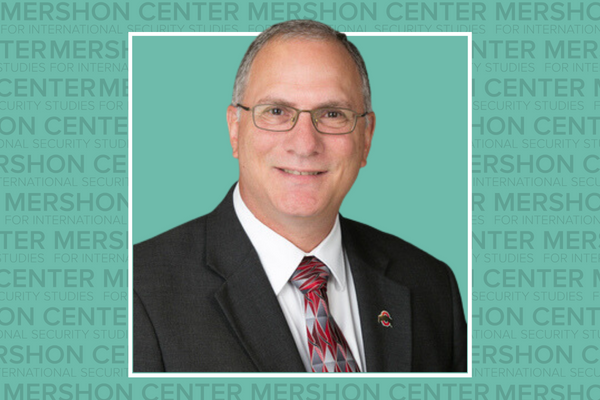
Last October, hundreds of veterans, citizens, and their families turned out on a rainy Saturday to celebrate the opening of the National Veterans Memorial and Museum in downtown Columbus.
The ceremony, marked with speeches by Sens. Sherrod Brown and Rob Portman, Reps. Joyce Beatty and Steve Stivers, L Brands CEO Les Wexner, and a keynote by retired Gen. Colin Powell, marked the opening of one of the most anticipated architectural creations in the world.
Built next to the Scioto River with a stunning view of the Columbus skyline, the museum’s structure consists of a pathway that spirals up to a rooftop sanctuary. A neighboring 2.5-acre memorial grove provides space for veterans and citizens to reflect about their service.
In attendance at the grand opening outside the 53,000 square foot, $75 million facility was Mershon affiliate Peter Mansoor, Gen. Raymond E. Mason Jr. Chair in Military History, who serves on the Veterans Advisory Committee that helped shape the vision for the building, grounds, and exhibits. Mansoor also personally fact-checked all the historical content.
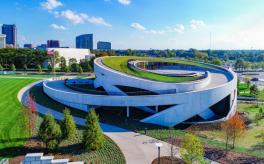
What separates the National Veterans Memorial and Museum from most museums is that it concentrates not on the broad sweep of events or adulation of generals, but on the direct and personal stories of everyday men and women who served in every branch of the military and every conflict since World War II.
About two dozen veterans – including Mansoor – discuss in straightforward terms why they enlisted, what military life was like, what happened during combat – including in some cases being critically injured – and what it was like to go home. Themes of service, being part of something larger than oneself, and coming to terms with life and death echo throughout.
Mansoor, who joined the Mershon Center in 2008 after a 26-year career in the U.S. Army that culminated in his service as executive officer to Gen. David Petraeus in Iraq, discusses the creation of the National Veterans Memorial and Museum in Columbus and how he got involved:
How did the National Veterans Memorial and Museum get to be located in Columbus?
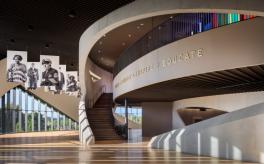
The impetus for a National Veterans Memorial and Museum came from Les Wexner, the founder, chairman, and CEO of L Brands, Inc. He noted that the Franklin County Veterans Memorial was, in his estimation, “hideous.” Only its name and the memorial tablets inside the building attested to its purpose. The building also badly need a costly renovation. Instead of using taxpayer dollars to refurbish an aging structure, Wexner suggested a public-private partnership, with more than $40 million of his own money jump-starting the effort, to build a brand new facility. Along the way Wexner recruited former Sen. John Glenn to head a veterans advisory committee, on which I also served. Further discussions with Governor John Kasich led to the memorial being expanded first to a statewide facility, and later, with support from Ohio’s Congressional delegation, to a national memorial and museum.
How did you become involved with creating the museum? Which aspects (for example, design, architecture, exhibits, subjects covered, text) were you involved with?
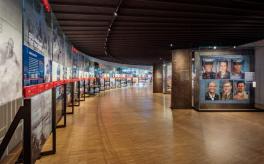
Les Wexner suggested to Guy Worley and Amy Taylor, the CEO and COO, respectively, of the Columbus Downtown Development Corporation, that I serve as a member of the veterans advisory committee. I readily agreed and later also chaired the sub-committee charged with developing ideas for the outdoor space (now the Memorial Grove, water cascades, and reflecting pool). In discussions with the museum design firm, I became concerned about quality control for the historical content in the exhibits. Amy asked if I would agree to take on that role, which I did. So I have looked at and edited every inscription, caption, and piece of explanatory text in the museum to ensure its historical accuracy. I’m hoping we got it right!
One of the largest exhibits at the museum is a long two-sided display recounting the history of military conflicts the United States has been involved with from the Revolutionary War to the Iraq War. Did you have a hand in that display?
The content was created by Ralph Appelbaum Associates, a first-class museum design firm that also created the content for the National Museum of African American History and Culture, the U.S. Holocaust Memorial Museum, and the National World War I Museum, among others. I worked with their team to ensure the historical accuracy of the exhibits, including the timeline of U.S. military history that wraps around the interior of the displays.
The roof of the building is a memorial space for fallen soldiers focused around an Infinity Flag. How was the design for this decided?
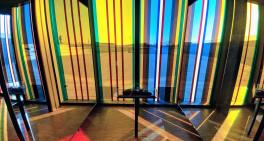
The designers wanted to show the continuity of service and sacrifice over time. The concept of an infinity flag does this in a dramatic and moving way. Also on the top floor are stained glass windows depicting various campaign ribbons from across American history. Viewing these windows from the outside is a very striking experience. The roof can be reserved for events such as military unit homecomings and reunions. Part of the design concept was to create a space for these functions, which now have an iconic home. The roof also allows for uninhibited views of the Scioto River and downtown Columbus – a scenic overlook not to be missed!
It looks like additional exhibits will be coming in 2020. Do you know what that will consist of?
The lower level is a space for rotating exhibits, which will change every nine months or so. The current exhibit is entitled “Light During Wartime,” and features the combat photography of Stacy Pearsall. She served in the Horn of Africa, the Middle East, the Arabian Peninsula, and Iraq before retiring from service in 2008 after being wounded in combat. The executive director of the NVMM, retired Lt. Gen. Michael Ferriter, and his team are working on lining up future exhibits.
What do you hope will be the experience of people who visit the National Veterans Memorial and Museum? Do you think veterans vs. non-veterans will have a different experience?
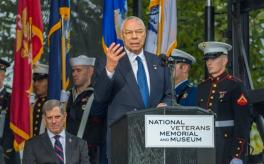
The mission of the NVMM is to honor, connect, inspire and educate. So I hope that visitors will honor the service of America’s veterans and perhaps connect to veterans in ways they might not currently do. I also hope the museum educates and inspires Americans to remember and honor the legacy of those men and women who have served the country from before its earliest days to the present.
Is there anything I haven't asked about that you think people should know about the National Veterans Memorial and Museum?
The building itself is an iconic piece of architecture. There are no load bearing walls; instead, the building is a three-dimensional concrete arch, the first ever constructed in human history. After the architects designed it, the engineers were not even sure construction was possible. So they created a scale model on the NVMM grounds to see if what they were attempting to create was possible. Thankfully for all veterans, it was.
Photo credits: All museum photos from the National Veterans Memorial and Museum Gallery except the Infinity Flag photo by Cathy Becker. Please right-click on the photos and open them in a new window to see full-size versions.
